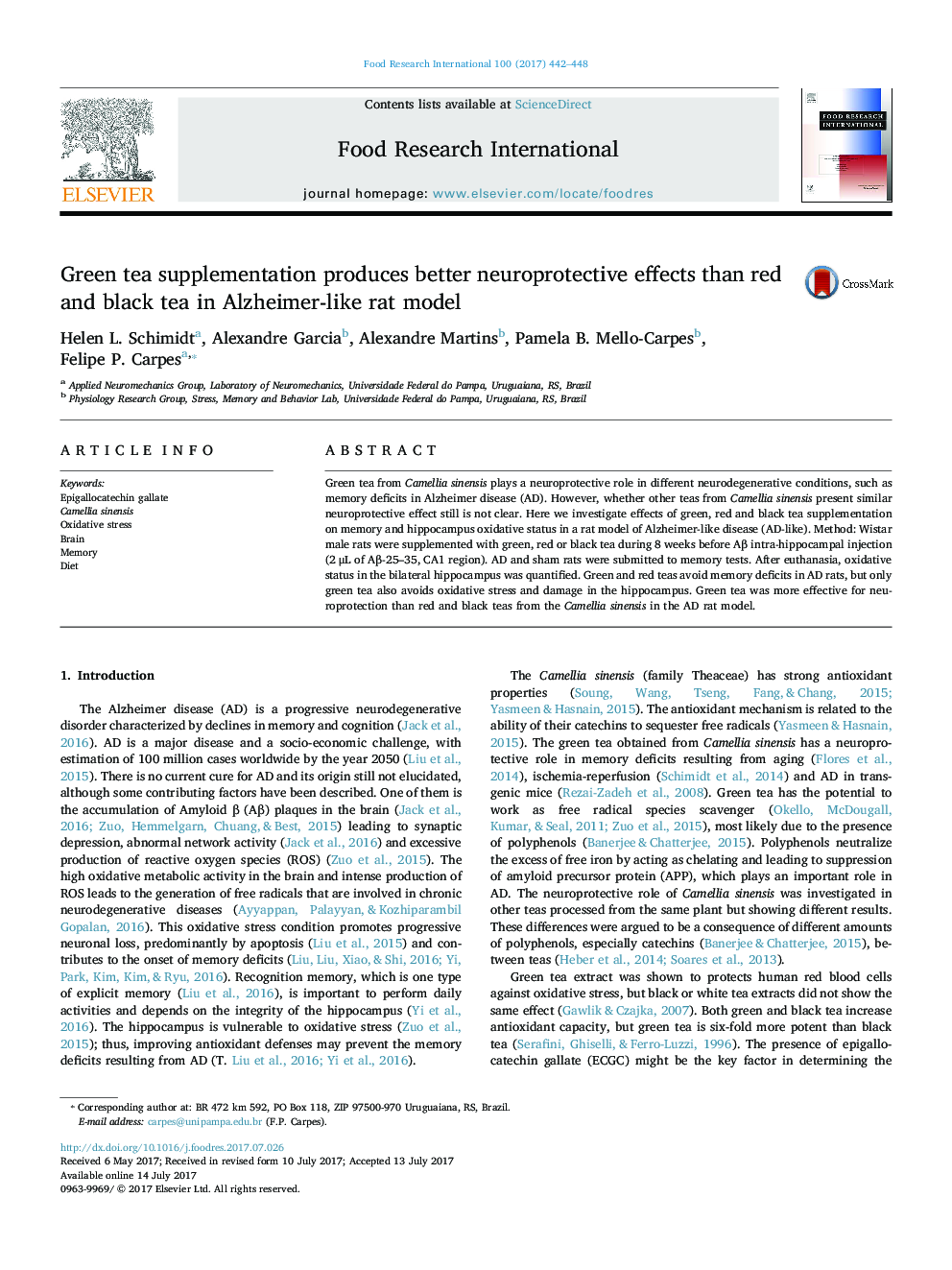| Article ID | Journal | Published Year | Pages | File Type |
|---|---|---|---|---|
| 5767994 | Food Research International | 2017 | 7 Pages |
â¢Teas from Camellia sinensis present different neuroprotective potentials.â¢Green and red teas avoid deficits in the short and long-term memories in AD rats.â¢Green tea avoids oxidative damage in the hippocampus.â¢Green tea presents the highest content of EGCG.
Green tea from Camellia sinensis plays a neuroprotective role in different neurodegenerative conditions, such as memory deficits in Alzheimer disease (AD). However, whether other teas from Camellia sinensis present similar neuroprotective effect still is not clear. Here we investigate effects of green, red and black tea supplementation on memory and hippocampus oxidative status in a rat model of Alzheimer-like disease (AD-like). Method: Wistar male rats were supplemented with green, red or black tea during 8 weeks before Aβ intra-hippocampal injection (2 μL of Aβ-25-35, CA1 region). AD and sham rats were submitted to memory tests. After euthanasia, oxidative status in the bilateral hippocampus was quantified. Green and red teas avoid memory deficits in AD rats, but only green tea also avoids oxidative stress and damage in the hippocampus. Green tea was more effective for neuroprotection than red and black teas from the Camellia sinensis in the AD rat model.
Graphical abstractDownload high-res image (179KB)Download full-size image
